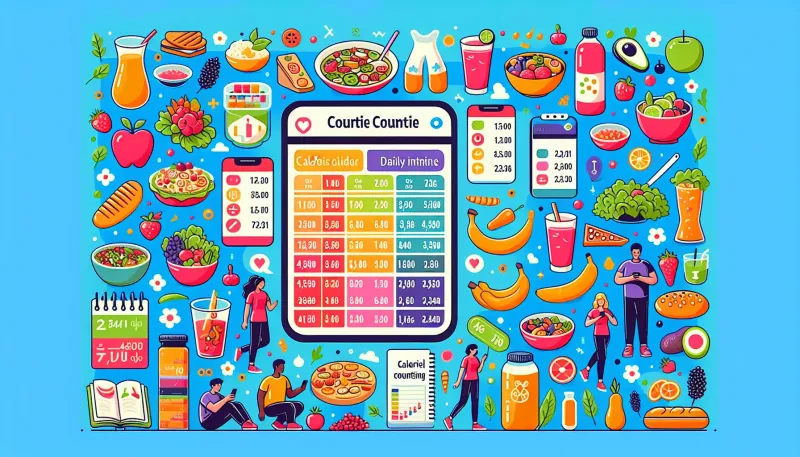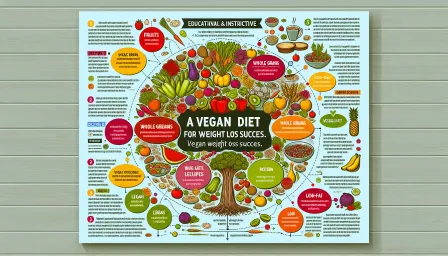How to Count Calories for Weight Loss: A Beginners Guide

Learn the basics of how to count calories for weight loss with our comprehensive beginners guide. Understand the principles, techniques, and tips to manage your calorie intake effectively.
Introduction
Weight loss can often seem like a daunting task, filled with countless diets and recommendations. One fundamental principle that frequently arises is calorie counting. This beginners guide on how to count calories for weight loss will provide you with a clear and comprehensive understanding of the process, ensuring you have the knowledge needed to start your weight loss journey effectively.
Understanding Calories
Calories are units of energy that our bodies use to function. Every activity, from breathing to running, utilizes calories. The food and drink we consume contains calories, providing energy to our bodies.
What Are Calories?
Calories are a measure of energy. Specifically, one calorie is the amount of energy needed to raise the temperature of one gram of water by one degree Celsius. In terms of diet, we commonly refer to kilocalories (kcal), where 1 kcal equals 1,000 calories.
Caloric Balance
Your body weight is influenced by the balance between calories consumed and calories expended. Consuming more calories than your body uses leads to weight gain, while consuming fewer calories than your body needs results in weight loss.
Determining Your Caloric Needs
Before you can count calories effectively, it's essential to understand your body's caloric requirements.
Basal Metabolic Rate (BMR)
Your Basal Metabolic Rate (BMR) is the number of calories your body needs at rest to maintain vital functions like breathing and circulation. You can estimate your BMR using various online calculators that typically take into account your age, gender, weight, and height.
Total Daily Energy Expenditure (TDEE)
Your Total Daily Energy Expenditure (TDEE) includes your BMR and the calories burned through physical activity. TDEE = BMR + activity level calories. By understanding your TDEE, you can better tailor your calorie intake to meet your weight loss goals.
Steps on How to Count Calories for Weight Loss
Here are the steps to start counting calories effectively for weight loss:
1. Set a Caloric Goal
To begin, determine a realistic caloric deficit. A common guideline is to aim for a deficit of 500 calories per day, which can lead to about 1 pound of weight loss per week.
2. Track What You Eat
Consistency is key when counting calories. Use a food diary, an app, or online tools to log everything you eat and drink. Make sure to include portion sizes and be as accurate as possible.
3. Read Nutrition Labels
Familiarize yourself with reading nutrition labels. They provide important information about the caloric content and serving size of foods. Pay attention to portion sizes, as they often differ from what you might typically consume.
4. Measure Portions
Use kitchen scales, measuring cups, and spoons to accurately measure your portions. Estimating portion sizes often leads to inaccuracies, affecting your caloric intake.
5. Be Mindful of Beverages
Liquid calories can add up quickly. Beverages like soda, juices, and alcohol contain significant calories. Including them in your tracking is crucial for accurate calorie counting.
Tips and Tricks for Effective Calorie Counting
Here are some additional tips to help you on your calorie-counting journey:
Plan Your Meals
Planning meals ahead of time helps you stay within your caloric limits and make healthier choices. You can prepare balanced meals that align with your calorie goals.
Opt for Nutrient-Dense Foods
Focus on nutrient-dense foods that offer vitamins, minerals, fiber, and other essential nutrients. These foods often have fewer calories, allowing you to eat more volume while staying within your caloric budget.
Avoid Hidden Calories
Watch out for hidden calories in dressings, sauces, and condiments. These can quickly add up and affect your overall intake. Opt for healthier alternatives or measure out portions carefully.
Stay Hydrated
Drinking water can help control your appetite and reduce the likelihood of overeating. Sometimes, our bodies confuse thirst with hunger, leading to unnecessary calorie intake.
Overcoming Challenges
Calorie counting isn't without its challenges. Here are some common obstacles and how to overcome them:
Social Situations
Social gatherings can make sticking to calorie goals difficult. Plan ahead by eating a healthy meal or snack before attending events to avoid overeating.
Restaurant Meals
When dining out, choose dishes with clear nutritional information, ask for dressings and sauces on the side, and don't hesitate to ask about preparation methods to make informed choices.
Consistency
Consistency is crucial for success. Stay committed, and remember that occasional deviations won't derail your progress if you get back on track quickly.
Conclusion
Counting calories is a proven method for managing weight effectively. By understanding your caloric needs, tracking your intake, and making informed food choices, you can create a sustainable path to weight loss. Remember, it's not just about the numbers but about fostering a healthier lifestyle overall. Stick with it, and you'll see progress over time.



























